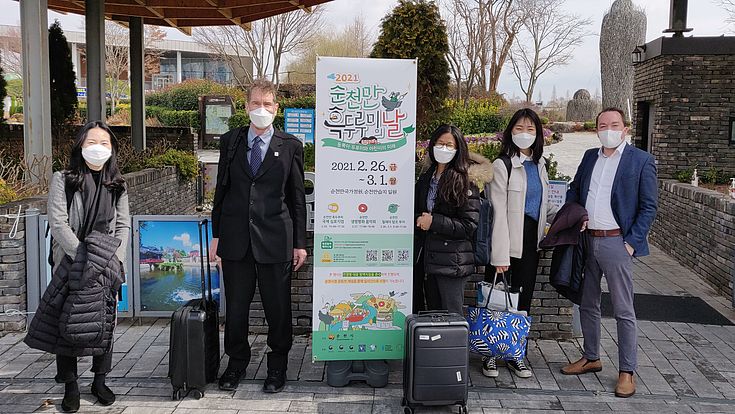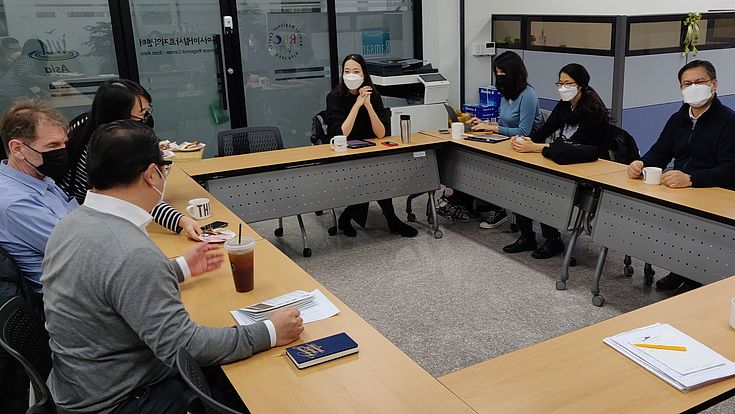Conference
Hooded Crane Symposium - A Connection between South and North

On the 26th of February, while the migration period already started and Hooded Cranes leave for their migratory journey up North, the Hooded Crane Symposium took place in Suncheon. HSF Korea was part of the event and introduced the work on biodiversity, conservation, and diplomacy on the Korean Peninsula and in Northeast Asia. Heo Seok, the mayor of Suncheon City, opened the Symposium and introduced the Suncheon Bay as an important crane habitat. Subsequently, several keynotes and presentations of experts took place, in which they talked about environmental education programs, crane habitat management and eco-environment programs. The Vice President of the International Crane Foundation, Spike Millington, was one of the keynote speakers and gave an intriguing overview of the migratory flyways of Hooded Cranes. He also emphasized the important role of children and their awareness for the conservation of Hooded Cranes.

Dr. Bernhard Seliger, resident representative of HSF Korea, had the honor to give remote video remarks about crane habitats in North Korea. The migration period of Hooded Cranes has just started, and the first birds arrived in Suncheon from Japan, he explained. North Korea is part of the flyway of Hooded Cranes and among others the tidal flats of Mundok and places near Onchon offer enough space and food for the cranes to rest. Dr Seliger stated that the status of Hooded Cranes is vulnerable and that there are only about 12.000 individuals left. Therefore, the conservation of these birds and their habitats is especially important. In order to protect the species, HSF Korea cooperates with the Ministry of Land and Environment Protection of North Korea. The goal of this cooperation is to protect key habitats like Mundok, Kumya and Rason Migratory Bird Reserves. Dr Seliger emphasized that birds don´t know borders and that this has probably became more obvious than ever in times of the Covid-19 pandemic. He ended his presentation with expressing his hope about the birds uniting countries by presenting a natural connection between nations and people, and by fostering mutual understanding among these.

HSF Korea is dedicated to promote peace, democracy and development globally, and on the Korean Peninsula since 1987. Aside the workshop, representatives of HSF Korea and the East Asian – Australasian Flyway Partnership (EAAFP) visited the Ramsar Regional Center – East Asia (RRC-EA) for further discussions. HSF, EAAFP and RRC-EA for several years combine their efforts to enhance cooperation along the Flyway of Migratory Birds and, among others, implement projects on the conservation of wetlands, birds, and biodiversity in North Korea. Also, representatives of the organizations joined a short monitoring survey at Suncheon Bay aside the event.
